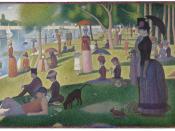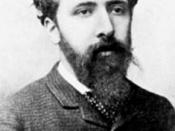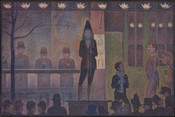Seurat and Signac. These are the names of the founding father of neo-impressionism and of its earliest follower. Others would imitate their example, but few would adopt it as their primary style. The primary goal of Neo-Impressionism was, according to Seurat, to go beyond impressionism and apply scientific research in found in all fields of physics to the art of painting. Also, Seurat was quick to admit that he was also trying to find something new and to create an art that was entirely his own. The best way to start to define the neo-impressionist methods of scientific color starts with describing the man who started the neo-impressionist movement. This was Georges Seurat, born in Paris late into 1859. He studied at the Ecole des Beaux-Arts where he developed a proficiency in the art of figure drawing. During his time at the school, he studied closely the work of Delacroix, whose ideas of color led his study of the scientific treatises of M.
E. Chevreul, M. C. Blanc, O. N. Rood and C. Henry. These scientists and their ideas founded the basis for much, if not all, of his color theories. Also, another of the masters that Seurat admired was Piero della Francescao. Seurat's formal design is often attributed to his study of this great master. After careful study of the texts of these scientists, Seurat developed the fundamentals for his theories on color theory and began applying it to his painting.
From studying the writings of Chevreul, Seurat learned some of the basic ideas that would influence his work. Among the ideas that he had gathered from the writings of scientists, it is Chevreul that stands apart from the rest as having had the greatest impact on both Seurat and the artistic world thereafter. To create the various...


